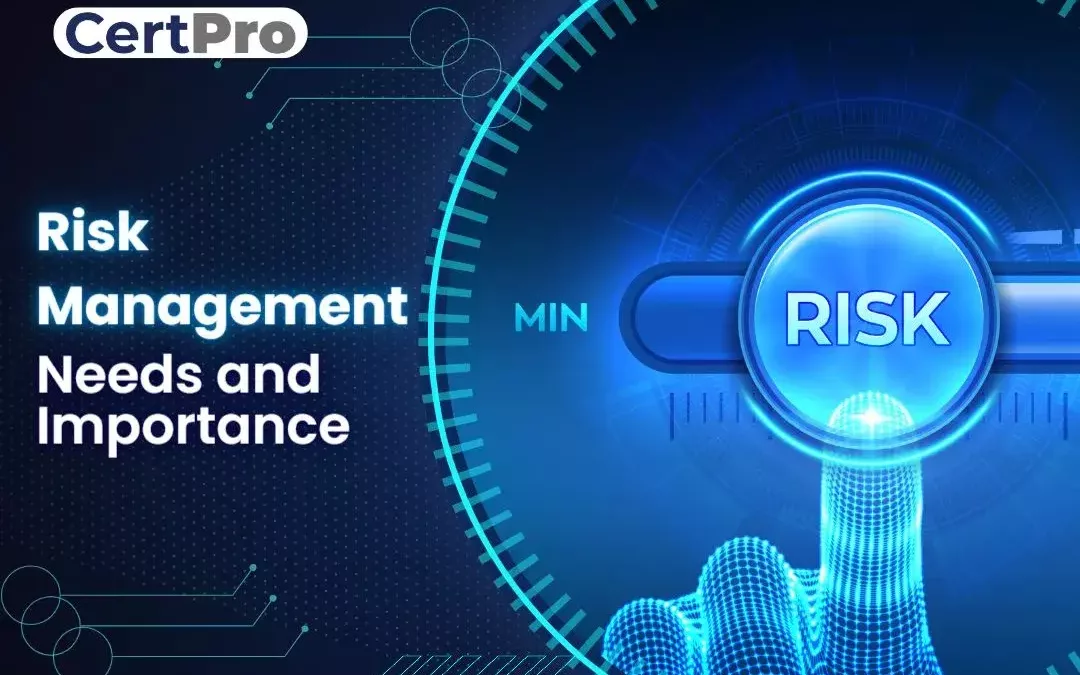Exploring the Sustained Benefits and Importance of Risk Management for Startups
Exploring the Sustained Benefits and Importance of Risk Management for Startups
Blog Article
Discovering the Significance of Risk Management for Effective Decision-Making Techniques
In the complex globe of organization, Risk Management emerges as an important variable in the decision-making process. The ability to identify prospective dangers and possibilities, and strategize accordingly, can mean the distinction in between success and failure.
Comprehending the Idea of Risk Management
Risk Management, an important part in decision-making, is often misunderstood or oversimplified. Typically, it refers to the identification, examination, and prioritization of dangers to lessen, keep an eye on, and manage the possibility or effect of regrettable events. Nevertheless, it's not simply about avoiding unfavorable outcomes, but also about recognizing possible possibilities. Risk Management involves regimented and structured approaches, making use of information and insightful assessments. It calls for a detailed understanding of the organization's context, objectives, and the possible dangers that could combat them. From economic uncertainties, legal responsibilities, tactical Management mistakes, to accidents and all-natural catastrophes, it addresses numerous dangers. Importantly, reliable Risk Management is not stagnant; it's a continual, positive process that progresses with altering circumstances.
The Duty of Risk Management in Decision-Making Processes
In the realm of critical preparation and service procedures, Risk Management plays an integral duty in decision-making procedures. Risk Management thus becomes an essential device in decision-making, helping leaders to make informed selections based on a detailed understanding of the dangers involved. Risk Management serves as a crucial element in the decision-making processes of any kind of organization.

How Risk Management Enhances Strategic Preparation
In the context of calculated planning, Risk Management plays an essential function. Initiating with the recognition of possible dangers, it additionally reaches the implementation of Risk reduction steps. The function of Risk Management is dynamic yet not fixed, as it demands constant tracking and adjusting of techniques.
Determining Possible Risks
:max_bytes(150000):strip_icc()/operational_risk.asp-Final-4be32b4ee5c74958b22dfddd7262966f.png)
Carrying Out Risk Reduction
Having actually developed the relevance of recognizing potential risks, the next step is to explore Risk mitigation. This process includes establishing and carrying out approaches to take care of identified threats effectively. It is an important element of calculated preparation as it boosts decision-making by minimizing potential negative outcomes. Risk reduction methods can vary from Risk evasion, Risk transfer, to run the risk of decrease. Each strategy should be visit our website tailored to the certain Risk, considering its possible effect and the company's Risk tolerance. Additionally, effective Risk reduction calls for a deep understanding of the Risk landscape and the prospective impact of each Risk. This understanding allows companies to focus on threats and allot resources efficiently, guaranteeing that one of the most considerable dangers are addressed first.
Surveillance and Changing Strategies
Though Risk reduction is a vital action in strategic preparation, continuous tracking and modification of these approaches is just as crucial. It likewise gives a possibility to examine the success of the Risk Management procedures, enabling modifications to be made where needed, additional boosting critical preparation. Surveillance and readjusting Risk Management methods is an essential part for enhancing an organization's resilience and critical preparation.
Case Researches: Successful Risk Management and Decision-Making
In the globe of company and finance, effective Risk Management and decision-making usually offer as the pillars of thriving enterprises. These situations highlight the value of sharp Risk Management in decision-making procedures. These cases emphasize the crucial duty of Risk Management in tactical decision-making.
Devices and Techniques for Efficient Risk Management
These tools, such as Risk registers and warm maps, help in identifying and evaluating prospective threats. Risk feedback approaches, an essential element of Risk Management, include approving, staying clear of, transferring, or mitigating dangers. With these tools and strategies, decision-makers can navigate the complicated landscape of Risk Management, consequently promoting educated and reliable decision-making.
Future Patterns in Risk Management and Decision-Making Strategies
As we explore the vast landscape of click for more Risk Management, it ends up being apparent that the tools and strategies utilized today will remain to progress. Future patterns point towards an increased reliance on modern technology, with expert system and machine learning playing substantial functions. These technologies will certainly allow organizations to forecast possible risks with better precision and make more enlightened decisions. Additionally, there will certainly be a growing focus on durability, not simply in handling risks yet likewise in jumping back from negative situations. The principle of Risk society, where every member of a company resource is aware and included in Risk Management, will certainly gain a lot more prominence. These patterns herald an even more comprehensive and proactive technique towards Risk Management and decision-making.
Verdict

Risk Management therefore comes to be an essential device in decision-making, aiding leaders to make enlightened choices based on an extensive understanding of the dangers included. Risk reduction methods can range from Risk evasion, Risk transfer, to risk decrease (importance of risk management). Efficient Risk reduction needs a deep understanding of the Risk landscape and the possible effect of each Risk. Risk reaction strategies, a vital element of Risk Management, include approving, preventing, transferring, or mitigating threats. The idea of Risk society, where every member of a company is conscious and involved in Risk Management, will certainly gain extra importance
Report this page